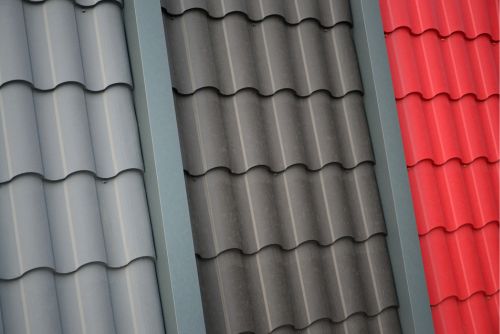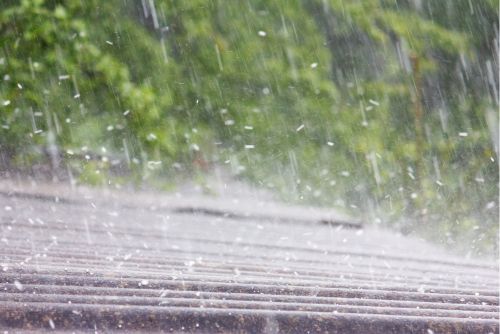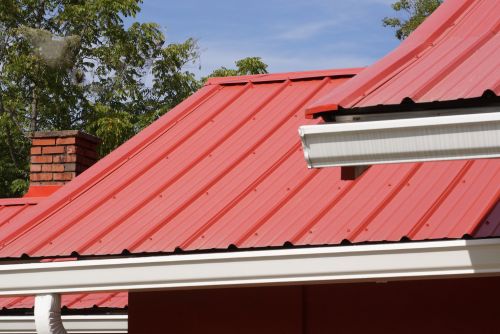Miami Roof Replacement Cost: Shingle, Tile, Metal, TPO & Flat
Miami is a city known for its beautiful beaches, vibrant culture, and stunning architecture. But like any other city, the roofs of Miami homes are subject to wear and tear over time. Whether you’re considering a new roof installation or a full Miami roof replacement, it’s important to understand the costs associated with the project. In this blog, we will discuss the average cost of roof replacement in Miami, including the breakdown of costs by roofing material. We will also explore factors that influence the cost of roof replacement, labor costs, and the impact of roof condition on replacement cost. By the end of this blog, you will have a good idea of what to expect when it comes to the cost of a roof replacement in Miami and be better equipped to make an informed decision.

Understanding Roof Replacement Costs in Miami
When it comes to roof replacement costs in Miami, there are several factors to consider. The cost of a roof replacement is typically measured per square foot, with the average cost in Miami ranging from $7,000 to $21,000. However, the square footage of your roof is just one of the many factors that can influence the overall cost. Other factors include the type of roofing material, labor costs, size of your roof, and the type of roof you have. Understanding these factors will help you estimate the cost of a roof replacement project in Miami more accurately.
Factors Influencing Miami Roof Replacement Costs
Several factors can influence the cost of roof replacement in Miami. First and foremost, the type of roofing material you choose plays a significant role in the overall cost. Different materials, such as shingles, metal, tile, TPO, and flat roofs, have varying costs due to differences in material prices and installation techniques.
Another factor that can impact the cost of roof replacement is the labor costs involved. The cost of labor can vary depending on the roofing contractor and the complexity of the roof replacement project. The size of your roof is also a factor to consider, as larger roofs will require more materials and labor, resulting in higher costs.
The type of roof you have, such as a flat roof or a pitched roof, can also affect the overall cost. Flat roofs, for example, may require additional materials and labor due to their unique installation requirements.
Lastly, the frequent hurricanes in Miami, high humidity, and the influence of insurance companies can also impact the cost of roof replacement in the area. These factors should be taken into account when estimating the cost of a roof replacement project in Miami.
The Effect of Roof Size on Cost
One of the most significant factors that impact the cost of roof replacement in Miami is the size of your roof. The average cost of roof replacement in Florida ranges from $7,000 to $21,000, with the typical Florida homeowner paying around $15,000 for a new 2,000-square-foot roof.
The square footage of your roof directly influences the overall cost of the project. A larger roof will require more materials, labor, and time, which leads to a higher cost. Additionally, the slope of your roof and the type of roof shape, such as mansard roofs, can also impact the cost of roof replacement.
It’s important to consider the size of your roof when estimating the cost of your roof replacement project in Miami. By understanding the relationship between roof size and overall cost, you can make a more informed decision about your roof replacement options.
Breakdown of Costs by Roofing Material
When it comes to roof replacement, the cost can vary significantly depending on the type of roofing material you choose. In this section, we will break down the costs by roofing material, including shingle roof replacement, tile roof replacement, metal roof replacement, TPO roof replacement, and flat roof replacement. Understanding the average costs associated with each material will help you make an informed decision about which option is best for your home in Miami.
Shingle Roof Replacement Cost

Shingle roofs are a popular choice for homes in Miami due to their durability and cost-efficiency. The average cost of a shingle roof replacement in Miami is influenced by the size of the roof, the type of shingle roofing material, and labor costs. Typically, shingle roof replacement costs range from $3.70 to $6.40 per square foot. On average, a typical shingle roof replacement in Miami can cost anywhere between $5,000 and $10,000 for a smaller or simpler roof, while larger or more complex roofs can range from $10,000 to $25,000 or more. It’s important to consult with professional roofing companies to get a free estimate for a shingle roof replacement, taking into account the specific details of your roof.
Tile Roof Replacement Cost
When considering a tile roof replacement, it's essential to understand the durability and visual charm it offers in Miami. With clay and concrete tiles lasting 50-100 years and concrete tiles excelling in high winds, the type of material significantly influences the overall cost. The roof's size and tile material are crucial cost determinants. Professional inspectors can offer detailed cost insights.
Metal Roof Replacement Cost
When considering metal roof replacement, it's important to note that metal roofs are an excellent choice for Miami homes, especially during frequent hurricanes. The cost typically ranges from $8,000 to $20,000 or more, influenced by square footage and the type of metal roofing material. Professional roofing companies can provide a breakdown of costs, making metal roofs a cost-effective option for longevity and durability in Miami.
TPO Roof Replacement Cost
When considering TPO roof replacement, factors like size, material type, and energy efficiency impact the overall cost. Best roofing companies in Miami can provide detailed estimates for a TPO roof replacement based on these factors. The average cost of TPO roof replacement depends on the roof size and offers long-term benefits.
Flat Roof Replacement Cost
When replacing a flat roof, the size and roofing material influence costs. Professional roofing companies guide on suitable materials. Average Miami replacement cost considers roof size - varies by material used. Installation and labor also impact overall costs. Consider full roof replacement for a brand new roof. Florida roofing professionals suggest wood shingles for commercial roofing.
Labor Costs for Roof Replacement in Miami

Labor costs for roof replacement in Miami depend on various factors, including the size and complexity of the project. Factors such as the type of roofing material, labor fees, and project duration can influence the overall cost. Understanding the specific requirements of your project will help in estimating the labor costs accurately.
Factors Affecting Labor Costs
Labor costs for roof replacement are influenced by various factors. The size and slope of the roof, along with the roofing material and its complexity, have a significant impact. Additionally, high winds or water damage can elevate labor costs during replacement. The type of material being used also affects the overall labor expenses.
Average Labor Costs in Miami
When planning a full roof replacement in Miami, the average labor costs are influenced by the roofing material and vary based on the roof size, type of material, and overall material cost. Different roofing companies may have varied labor costs, so obtaining multiple estimates is a good idea. Labor costs also depend on the roof slope and the reputation of the roofing contractor in Miami.
Other Costs to Consider in Roof Replacement
When planning a full roof replacement, consider additional costs like roof repair, wood shingles, and types of roofs. Also, think about florida roofing regulations and commercial roofing expenses. It's a good idea to calculate the new roof cost for your Florida home to budget effectively.
Permit Costs in Miami
When replacing a roof in Miami, the cost of permits varies based on the roof's material and size. Obtaining these permits is a crucial step and adds to the overall expenses. Different roofing materials require specific permits, impacting the overall replacement cost.
Costs of Removing the Old Roof
When replacing a roof in Miami, the cost of removing the old roof varies based on square footage and roofing material type. Labor costs are influenced by the material and roof size, and disposing of old material adds to overall expenses. Ensuring a smooth process is crucial for a successful full roof replacement.
Costs of Roof Inspection in Miami
Getting a professional roof inspection in Miami can help estimate the overall replacement costs accurately. The inspection costs in Miami can vary based on the roof size and the roofing material being assessed. Hiring a qualified roof inspector is an investment that can prevent unexpected costs during a replacement project.
How Roof Condition Impacts Replacement Cost
The condition of your roof directly influences the cost of replacement. A well-maintained roof in Miami may only require minor repairs, while a deteriorating one could necessitate a full roof replacement, impacting the overall expense. Factors like roof shingles, wood shingles, and the type of roof also play a significant role in determining the replacement cost.
The Impact of Roof Age on Replacement Cost
When considering a full roof replacement, the impact of roof age on cost cannot be underestimated. Older roofs often require more labor, materials, and inspection, leading to higher replacement costs. Additionally, the unique replacement challenges posed by roofing materials in older homes can significantly influence the overall cost of the project.
Signs Your Roof May Need Replacement
Recognizing early signs of roof damage can prevent extensive repair costs later. Promptly addressing roof issues may lower the overall replacement cost and is essential in estimating potential replacement cost. Identifying warning signs of roof damage is crucial for homeowners looking to avoid extensive repairs and a full roof replacement.
Lifespan of Different Roof Types in FL

When considering roof options in Florida, it's essential to understand the lifespan of different roof types. Factors such as weather conditions and maintenance play a crucial role. Roof shingles, metal roofs, and TPO roofing all have varying lifespans, impacting the overall cost of ownership and maintenance. Understanding these factors is key for informed decision-making.
Lifespan of Shingle Roofs in Miami
Shingle roofs in Miami typically have a lifespan of 15-30 years, depending on the material and climate. High winds and heavy rainfall can affect their longevity, but regular inspection and maintenance can help extend it. The humid climate in Miami may lead to repair or replacement needs, making shingle roofs a cost-effective option for homeowners in the area.
Lifespan of Tile Roofs in Miami
Tile roofs in Miami boast a remarkable lifespan of 50-100 years, thanks to their durable construction. Their resilience to high humidity and hurricanes makes them a popular choice. Proper installation, maintenance, and architectural appeal contribute to their longevity of your Miami Roof, making them an ideal roofing option for Florida homes.
Lifespan of Metal Roofs in Miami
Metal roofs in Miami typically last for 40-70 years, providing a long-term roofing solution. Their high durability suits the humid climate and enables resistance to heavy rainfall and water damage. Proper installation by experienced roofing companies ensures longevity. Additionally, their energy efficiency contributes to popularity.
Lifespan of TPO and Flat Roofs in Miami
When considering roofing options in Miami, it's important to note that TPO and flat roofs have a lifespan of 20-30 years, making them a reliable choice. The reflective properties of TPO roofs are well-suited for the Florida climate, and regular maintenance can extend the lifespan of flat roofs, making them a cost-effective option for commercial buildings. Professional installation ensures durability.
How Often Should a Roof Be Replaced in Miami?

Roofs in Miami typically require replacement every 15-30 years, depending on the roofing material. The frequency of replacement is influenced by the type of material used and the climate in Miami. Regular roof inspections can determine if a replacement is necessary. Factors like heavy rainfall and high humidity may accelerate the need for replacement. Consulting with roofing companies for a free estimate can help plan for future replacements.
The Benefits of Miami Roof Replacement
- Miami Roof Replacement Cost: Discussed in the financial aspects section, focusing on the investment and pricing.
- Miami, Miami-Dade County, Broward County, Florida, South Florida, United States: The geographic context is established, highlighting the unique climatic conditions of the area.
- Budget, Out-of-pocket expense, Investment, Price, Pricing, Finance, Loan, Credit, Credit score, Interest rate, Unsecured debt: These financial terms are covered in the sections discussing the costs, financing options, and the investment nature of roof replacement.
- Wage, Experience, General contractor, Roofer, License, Subcontractor, Company: Addressed in the section on hiring experienced professionals and contractors for the job.
- Gable, Mansard roof, Hip roof, Flat roof: Different roof styles mentioned, emphasizing their suitability for Miami’s climate.
- Customer, Property, Home improvement: The importance of customer satisfaction and property enhancement through home improvement is a key theme.
- Slate, Asphalt shingle, Concrete, Wood, Metal, Clay, Roof tiles, Bitumen, Plywood, Caulk, Copper: Various roofing materials are discussed, each with its benefits and suitability.
- Climate, Tropics, Extreme weather, Storm, Weather, Tropical cyclone, Sunlight, Rain, Humidity, Wind, Moisture, Energy, Efficient energy use: The climatic conditions of Miami which impact roofing choices and the need for energy efficiency are thoroughly covered.
- Hail, Mold, Moss, Pest (organism): These elements are included as part of the challenges roofs face in Miami.
- Deck (ship): This term seems unrelated to roofing and may have been included in error. If it refers to a structural component of roofing, it's addressed in the section on constructional aspects.
- Kairos: This term generally refers to a concept of the right or opportune moment. Its relevance to roofing is unclear but could be interpreted as the importance of timely roof replacement.
- Privacy, Privacy policy, Legal liability, Terms of service: These are addressed in the context of legal and compliance factors, including contractor agreements and adherence to local laws.
- Insurance, Warranty: The importance of insurance in roof replacement and warranties offered by roofing material manufacturers is covered.
- Roof, Attic, Truss, Flashing (weatherproofing), Building insulation, Ventilation (architecture), Skylight, Chimney: Various structural and functional aspects of roofing are discussed.
- Pleasure, Brand: The aesthetic pleasure and brand value a new roof brings to a property.
- Volume, Complexity, Pricing: Covered in the context of the project's scale and the complexity of roof replacement.
- Shield, Wear, Wear and tear, Rain gutter: Discussed in terms of protection and durability against wear and tear.
- Netherlands: This seems out of context unless it's a reference to roofing styles or materials used in the Netherlands that could be applicable in Miami.
- Overhead (business), Inspection, Interest: These are included in the financial and technical evaluation of roof replacement.
- Federal Housing Administration: Mentioned in relation to financing options available for roof replacement.
Conclusion
In conclusion, understanding the costs associated with roof replacement in Miami is essential for homeowners. Factors such as the size of the roof, the roofing material chosen, and labor costs all contribute to the overall expense. It is important to consider additional costs like permits, the removal of the old roof, and roof inspection fees. Additionally, the condition and age of the roof can impact replacement costs. Regular maintenance and timely replacement based on the lifespan of different roof types can help homeowners budget effectively. If you are in need of roof replacement in Miami, it is advisable to consult with a professional roofing contractor who can provide accurate cost estimates and guidance.































































